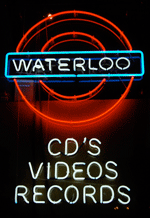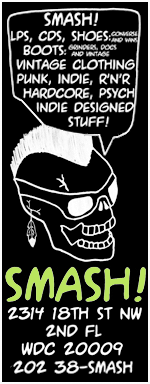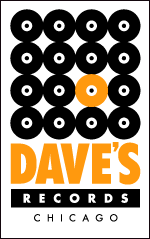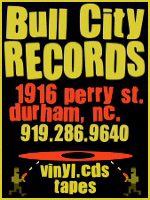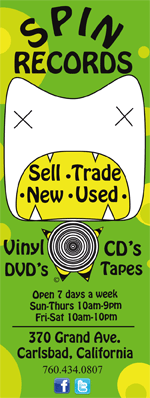
Recorded in 1990 and released on compact disc two years later, Circular Temple by the Matthew Shipp Trio is a fathoms-deep excursion into a jazz avant-garde that was revitalized and on the move. On September 15, the record, which showcases bassist William Parker and drummer Whit Dickey with pianist Shipp, is receiving its second reissue, this time on ESP-Disk, and on vinyl for the first time with new artwork by Yuko Otomo. Consisting of four movements with the second a nod to Thelonious Monk, the music is gripping and wildly beautiful. It is a must for any serious collection of avant-garde jazz.
Circular Temple first came out on Quinton Records, the sole release by Shipp’s own label. The CD had solid artwork by Ann Kalmbach and a terrific liner essay by poet John Farris, but like many self-released records, it was fated to essentially fall under the radar in an era when the profile of free jazz was on the upswing.
I first heard about Circular Temple two years later when it was reissued, once more only on CD (with a different cover illustration by Lawrence Holzworth) by Infinite Zero, the very interesting label started up by Henry Rollins and Rick Rubin during the ’90s record industry boom time that was devoted solely to reissues of cool stuff (e. g. Devo, James Chance, Iceberg Slim, Tom Verlaine, Alan Vega, Alan Watts, Flipper, Mississippi Fred McDowell, Trouble Funk).
Like a lot of folks reared on punk rock and associated sounds during this era, I was looking to branch out stylistically beyond, and having already caught the jazz bug with a predilection for the avant-garde, I picked up a copy of Circular Temple (I do believe the only jazz recording on Infinite Zero, though Rollins did put out new recordings by Shipp and others in the avant-jazz scene on his own 2.13.61 label). To say I was promptly blown away by the sheer range of its power is an understatement.
But Circular Temple wasn’t my introduction to Shipp, as I’d snagged a copy of the excellent Flight of I by the David S. Ware Quartet, which was released by DIW/Columbia in ’92, with Circular Temple’s bassist Parker in the band alongside drummer Marc Edwards and tenor saxophonist Ware. Picking up Circular Temple did provide my first exposure to drummer Dickey, who was part of Shipp’s quartet with Parker and alto saxophonist Rob Brown (they released Points on Silkheart in ’92).
Parker is the elder on Circular Temple, having debuted on tenor saxophonist Frank Lowe’s Black Beings via ESP-Disk way back in ’73, though it wasn’t until the ’90s that Parker’s discography began to really take off. I first heard him (and saw him) on a video recording of a free improv live at the Knitting Factory by a trio with Peter Brötzmann on tenor sax and clarinet and Milford Graves on drums.
My next encounter with Parker came via In Florescence, pianist Cecil Taylor’s brief 1990 return to a major label (A&M) in a trio completed by percussionist Gregg Bendian. That was a killer record, and hearing it really underlined the differences between Taylor and Shipp, which is worth pointing out now, as there are still instances where the two pianists are lazily compared.
The reality is that the young Shipp is very much his own man on Circular Temple. While there are hard struck keys in the album’s opening movement, with some considerable rumble-thunder near the end of the piece, Shipp avoids the hyperactive (and downright athletic) note-spillage that has come to be associated with Taylor.
When the note flurries do arrive in the second movement, they retain an implicit lyricism that sets Shipp apart. “Circular Temple #2” gets the “(Monk’s Nightmare)” parenthetical, acknowledging a connection to the past while resisting a devotion to it (an important gesture as the neo-trad era wasn’t over). There are also no blatant stylistic homages to Monk in Shipp’s playing. There is certainly a Monk-ish undercurrent or two, but the implicitness of the influences—definitely Andrew Hill, perhaps Dave Burrell and Don Pullen, is refreshing.
Taylor is such an huge presence in avant-jazz piano that to deny that he impacted Shipp’s music is foolish, but what makes Shipp great (one thing that makes Shipp great) is how he internalizes Talyor and essentially nullifies the comparison. What’s clear across Circular Temple is that Shipp had already firmly established his own voice, an impressive feat.
But there’s also no anxiety over making an impression, as Shipp totally lays out for the third movement, a Parker-Dickey duet that magnifies their abilities while maintaining an air of the unexpected, Parker alternating between pizzicato and arco, Dickey giving as much attention to his cymbals as his skins.
It takes roughly four minutes for Dickey to enter the scheme in the side-long 25-minute final movement, with Parker following shortly thereafter. Shipp’s intro solo stretch is exquisite, and once the interaction starts the gradual workup of intensity is as captivating now as it was three decades back. And the thunder really comes at the end of side two. Circular Temple is a masterpiece by the Shipp trio that’s potency is undiminished.
GRADED ON A CURVE:
A
















